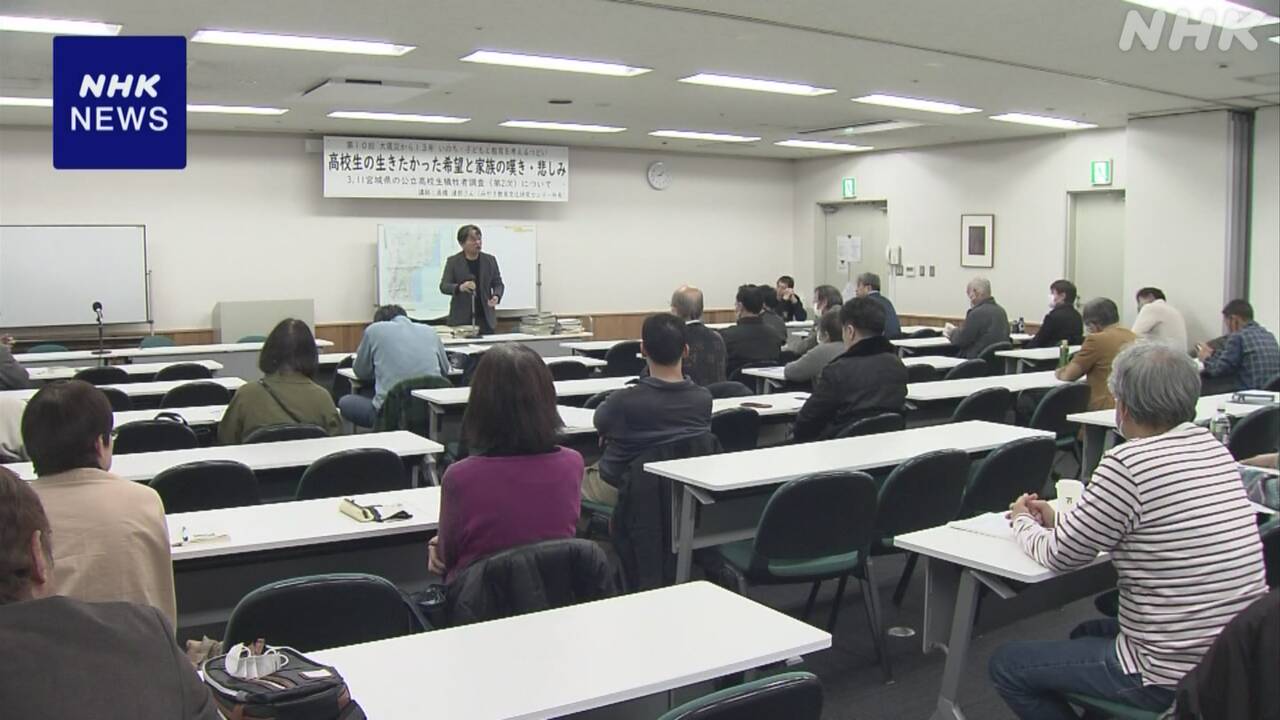A former teacher compiled the results of interviews with schools and other institutions about high school students who died in the Great East Japan Earthquake, and a report meeting was held in Sendai on the 17th. Learning from the fact that 40% of students in Miyagi Prefecture died at home, he appealed to schools and families to discuss how to evacuate from earthquakes and tsunamis when they are outside of school.
The Miyagi Prefectural Teachers' Union and other organizations hold a gathering every year to think about the lessons learned from the Great East Japan Earthquake, and about 40 people, including teachers, gathered at the venue in Sendai.
Among them, Tatsuro Takahashi, a former teacher and director of the Miyagi Educational Culture Research Center, conducted an independent interview survey with high schools and teachers starting in 2020, based on the results of the public high schools that lost their lives in Miyagi Prefecture in the Great East Japan Earthquake. We reported on the status of 87 students.
Until now, the details of the damage to high school students have not been known, and the most common situation in which they were affected was ``at home'' (36 people, accounting for over 40% of the total), followed by ``while evacuating'' (27 people), and ``while working part-time''. ”, and 19 students were unsure of the situation.
Some of the students who were "at home" died trying to help their grandparents evacuate or waiting for their families to return, and Mr. Takahashi read out the circumstances of each student's death.
Since many students were affected by the disaster in places other than the school, he called for schools, families, and the community to work together to discuss evacuation methods on a regular basis.
Mr. Takahashi also learned that in Miyagi Prefecture, students from an inland high school who commuted from the coast were victims of the tsunami, and that it is necessary to be aware of disasters that occur not only where schools are located, but also on routes commuting to school. I pointed it out.
A male elementary school teacher who participated said, ``I want the students to tell the story of today and use the lessons learned when they become high school students in the future.''
Director Takahashi said, ``I once again felt that students who had hopes and dreams for the future were sacrificed.I want teachers to know the records of each student who died, which cannot be conveyed by numbers alone, so that it will not happen again.'' I want this to be used in disaster prevention education to prevent this from happening."
Director Takahashi said he would like to distribute the records of the victimized students to high schools in the prefecture, and will continue to investigate students whose circumstances are unknown.

